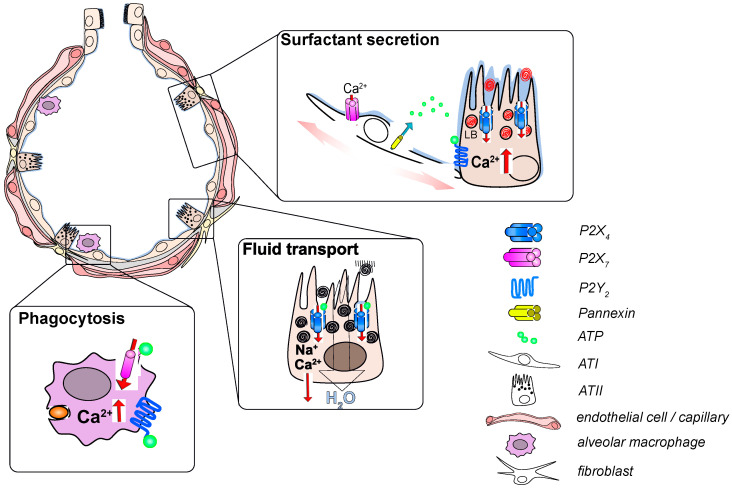Figure 1.
Functional relevance of P2 receptor signaling in the alveolus. Inflation of the alveolus leads to stretch-induced release of ATP (adenosine triphosphate) from alveolar epithelial cells which activates P2Y2 receptors on ATII (type II) cells. The resulting Ca2+ release from the endoplasmatic reticulum stimulates LB exocytosis. Subsequent activation of P2X4 receptors on the limiting membrane of fused LBs results in a fusion-activated Ca2+-entry (FACE) which facilitates release of surfactant from fused LBs. FACE also results in transepithelial cation transport leading to fluid resorption from the alveolar lumen to promote activation of secreted surfactant. Activation of P2X7 and P2Y2 receptors on AMs results in an increase in intracellular Ca2+ that facilitates phagocytosis of airborne particulates.

